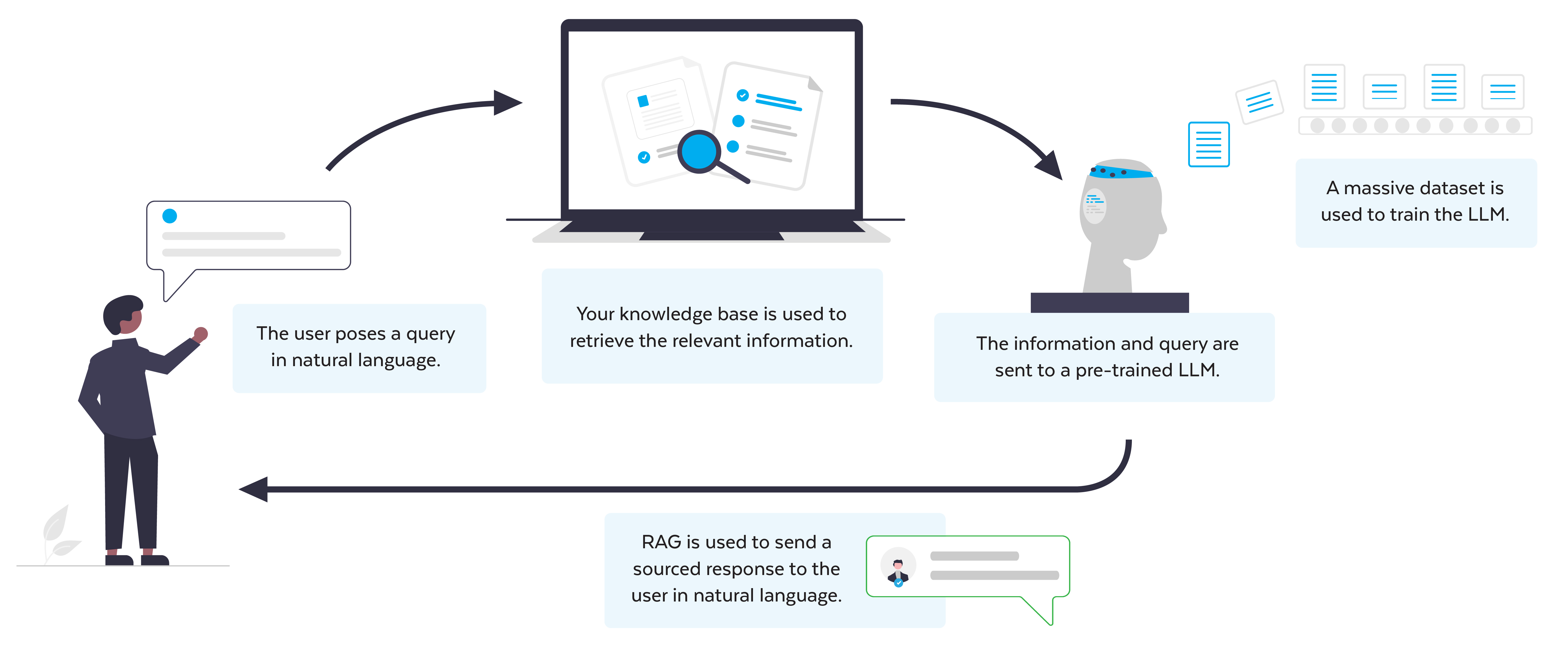What exactly is RAG (Retrieval Augmented Generation)?
Anyone who works with AI regularly will quickly notice that generative models like ChatGPT are impressive, but they also have their limitations. They can make mistakes, invent sources or provide outdated information. This has recently led to problems.
For example, in March 2025, a Norwegian man filed a complaint against OpenAI after ChatGPT falsely claimed that he had murdered his two children. In addition, the European Consumer Organisation has called for an investigation into the potential harm to people from such 'hallucinations' by AI chatbots.
Retrieval Augmented Generation (RAG) explained
With Retrieval Augmented Generation (RAG), the AI chatbot's answer is not retrieved from its own memory. Instead it first searches your documents, databases or sources, and then processes that input into the answer.
This keeps the output factual, up-to-date and, most importantly, traceable to a source. RAG is exactly what companies need if AI is not just used as a simple tool, but as a truly reliable addition.

Why do companies use RAG?
With this explanation, it is easy to understand that more and more companies are switching, or are planning to switch, to RAG because it gives them back control. You do not simply bring in ‘an AI’ that has been trained on unknown sources, but you combine the power of AI with your own data.
This reduces the risk of errors, provides traceable input, and ensures that users can work more efficiently.
How companies use RAG
RAG comes into its own in situations where facts, speed and reliability are key. These practical examples show how companies are already using RAG today to search large amounts of company data in a smart way.
1. Technical helpdesks and service departments
Imagine a service employee who receives a question about a complex machine or process. Instead of going through years of training to acquire all the knowledge, or digging through manuals at the time, he asks the system a question in human terms.
RAG searches directly in the available sources and the technician receives a clear answer in no time, including a link to the exact passage in the manual.
2. Internal knowledge sharing
Departments such as HR, IT and legal are often inundated with questions about employment conditions, legislation or internal processes. Employees lose time searching or ask the same questions to HR.
RAG changes this: it searches the internal documentation, knowledge base and current policy documents in real time and provides an immediate answer.
3. Legal and financial processes
RAG can be used to search case law, internal policy documents, reports and analyses and to answer complex questions. This saves teams hours of work searching through sources before a substantiated answer is given.
Ensure you know where your data is located with on-premises RAG hosting
Cloud solutions are fast and flexible, but not desirable for many organizations. In several sectors, the handling of data is strictly regulated, and new regulations are added every year. That is precisely why the smart choice for companies is RAG solutions that run on-premises, on their own servers within their own network.
Not only does the data not leave the company and is it not stored anywhere else, which means that RAG complies with privacy regulations. It also enables integrations with own systems, allowing companies to work with their own data even faster.
RAG makes AI practical and safe to use
AI is powerful, but only if you harness it properly. With Retrieval Augmented Generation (RAG), companies get the most out of AI without the risks of generic online tools.
For those who really want to work professionally with AI, and do not want to fall behind in the future that companies are making, using RAG to quickly and efficiently search your own data is the most logical choice.
Would you like to receive advice about RAG within your organization?
Contact us and discover how you can use RAG smartly and safely. Our consultancy is fully tailored to your sector and your existing systems.
Get in touch today











